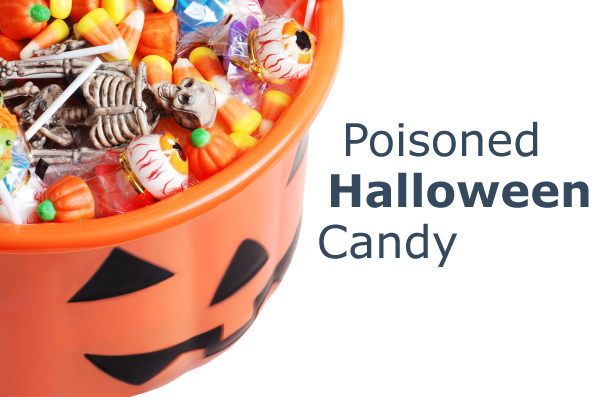Is poisoned candy a real danger to trick-or-treaters?
Don’t Believe That!
When I was a kid, the scariest thing about Halloween wasn’t ghosts and monsters – it was the thought that my Halloween haul might include a poison Tootsie Roll or an apple with a razor blade in it. Many parents today still go through the annual ritual of examining their kids’ candy for anything suspicious. Some hospitals even offer to x-ray Halloween treats.
But, how common are these incidents? As it turns out, seeing an actual ghost or monster may be more likely.
The foremost expert on this subject is undoubtedly Joel Best of the University of Delaware. Mr. Best has been researching the topic since 1985. His conclusion? He was unable to find even a single incident of a child dying from poisoned Halloween candy given to them by a stranger. Of course, there were numerous stories in the media (78 in all since the 1950s, including five deaths) but upon further investigation all were proven to be hoaxes or had an alternative explanation. For example, five-year-old Kevin Totson from Detroit died in 1970 after ingesting heroin that had been hidden in the house by his uncle. His relatives sprinkled heroin on his Halloween candy after the fact in an attempt to divert suspicion from their family member. The media tends to initially report these stories but quickly move on to other topics after Halloween and fails to follow up when the stories are later proven to be untrue.
An eight-year-old boy in Pasadena, California did die after eating a cyanide-laced Pixy Stick in 1974. But the police investigation revealed that he had been poisoned by his own sicko father in an attempt to collect money on a life insurance policy.
As far as foreign objects go, Mr. Best found only a very few cases connected to Halloween. In one case a pin was ingested a week before the holiday and in the other a 55-year-old man swallowed a needle that was said to have been in a caramel-coated apple. Neither had any connection to trick-or-treating. In 2000 a man did put needles in Snickers bars and hand them out to kids – one teenager was pricked by a needle but there were no other injuries and the man was promptly arrested.
Halloween is, however, a dangerous holiday for other reasons. A 1997 report showed that children have a 400% increased risk of being struck by a car on Halloween. According to State Farm Insurance, Halloween unfortunately has more child-pedestrian fatalities than any other day of the year.




